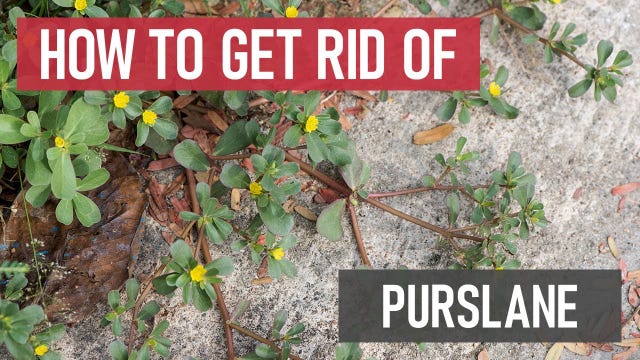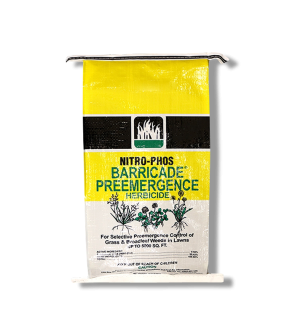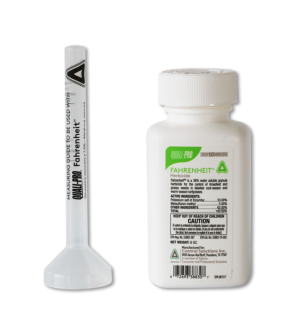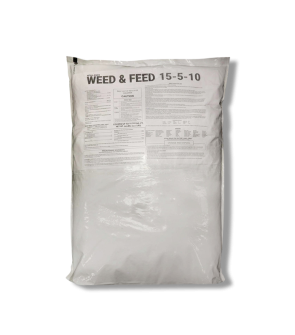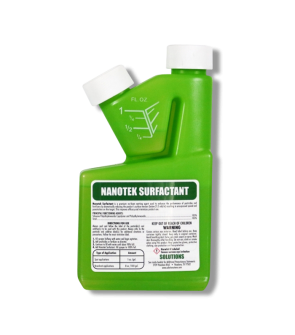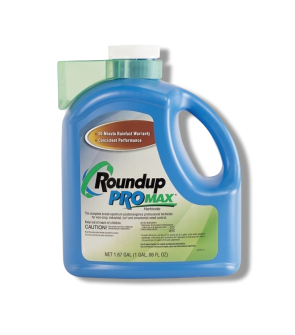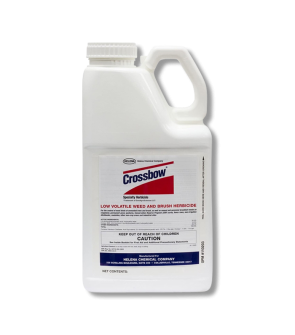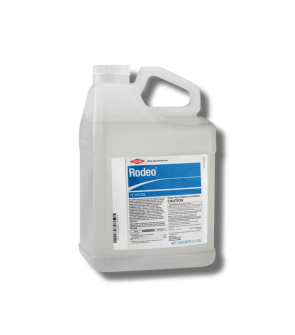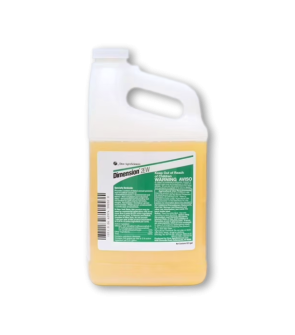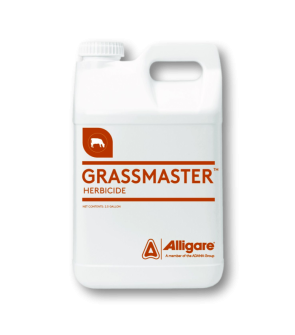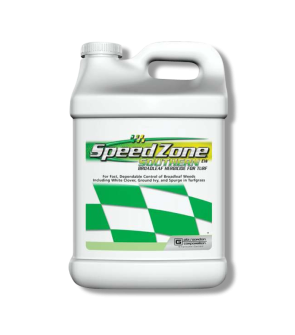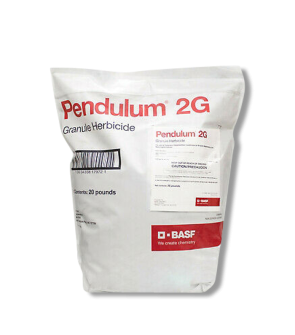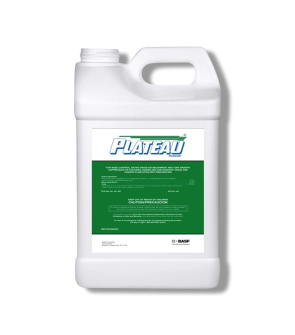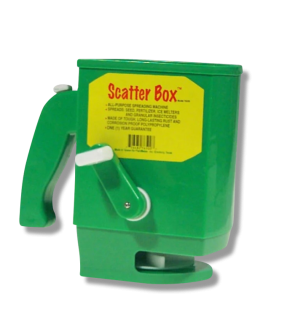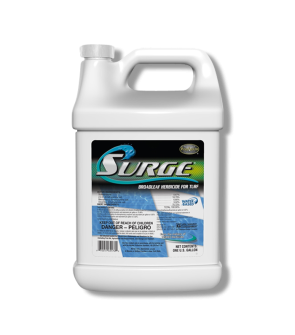Gain access to personalized product screening, the best pricing, rewards, and more!
Most Effective Products
Purslane Control: How To Get Rid of Purslane
This page is a general DIY guide for controlling purslane. Using the recommended products and methods, you will get rid of purslane. Follow this DIY article and use the recommended products, and we guarantee complete control of the purslane.
Purslane is a summer annual broadleaf weed that is a common problem on lawns and gardens across the country. It tends to grow vigorously on warm, moist, and sufficiently fertilized soil and can easily thrive in damp areas.
The purslane plant's distinguishing characteristics are its thick and succulent leaves and fleshy stem, which is slightly red in tone. It also features a thick taproot with a multitude of fibrous secondary roots.
The life cycle of Purslane starts in the springtime when the seeds first germinate. It then blooms between June and November, when a hard frost and cold temperatures finally kill it off. Common purslane is a prolific seeder, with a single plant able to produce up to 240,000 seeds, which may germinate even after 5 to 40 years!
If you're having trouble with purslane on your lawn, our DIY treatment guide can help. The directions below were recommended by our lawn care experts and will show you how to eliminate purslane properly from your lawn or garden.
Identification
Before carrying out a treatment program, you will need first to be certain that you are dealing with purslane and not some other weed. Careless identification can lead to the use of the wrong treatment methods, which can be a waste of time and money. Below, we have shared some identifying characteristics so you know what purslane looks like:
- Purslane is usually a low-growing prostrate weed, meaning its stems grow along the ground but sometimes can grow upright. The stems are smooth and can grow up to 12 inches long. They are also reddish brown.
- Its oval-shaped leaves grow directly from the stem. They are ovular, smooth, and shiny. Purslane leaves can grow to be half an inch to 2 inches long. This weed will grow succulent leaves that are particularly thick and fleshy.
- When this weed matures, it produces small yellow flowers with 5 separate notched petals. The flowers open at the center of the leaf cluster for only a few hours on sunny mornings.
- When seeds are produced, they will be small, reddish-brown to black, oblong-shaped, and kept in pods that eventually split open.
Use the description and image above to help you properly identify purslane on your property. If you are not totally sure, contact us and send us a photo of your weed. We will identify it for you and suggest treatment options.
Inspection
After you have confirmed that you are dealing with purslane, you can proceed with the inspection. During this phase, you will locate areas where purslane is thriving and observe the conditions that allow it to grow. This information will help you know where to focus your herbicide application.
Where to Inspect
Purslane grows well in various soil types with full sun exposure. It emerges from the soil from late spring to summer when temperatures reach 60 degrees Fahrenheit.
Common sites are more open, sunny areas such as lawns, gardens, roadsides, landscape areas, orchards, vineyards, and disturbed areas like crop fields.
What to Look For
Look for purslane leaves and flowers. In moist, warm conditions, purslane grows in dense mats of red stems and has oval, shiny, succulent leaves. Depending on the time of its development, you may see yellow summer flowers with seed pods filled with tiny, reddish-brown, or black seeds.
This weed will produce flowers after several weeks and seeds just three weeks later. Flower and seed production will continue until temperatures drop in the fall.
Treatment
Before starting, wear the proper safety equipment when mixing and handling herbicides. Wear long pants and a long-sleeve shirt, along with gloves and goggles.
If purslane is already present on your lawn, then a post-emergent broadleaf herbicide containing either 2,4-D, dicamba, mecoprop, sulfentrazone, triclopyr, or fluroxypyr will work best.
Purslane weed is best dealt with while the plant is still young, so you need to act fast to improve your chances of control.
Step 1: Measure and Mix Herbicide
Determine how much herbicide material you will need by measuring the square footage of the treatment area. To do this, measure the length and width of the treatment area in feet, then multiply them together (length X width = square footage).
To get rid of purslane in cool-seasoned turf as a spot application, apply 1/4 pint of 2,4-D Amine Selective Post-Emergent Herbicide with 3 gallons of water.
To make spot applications in warm-seasoned turf, we recommend using Fahrenheit Herbicide.
To perform spot applications, mix 0.2 oz. of Fahrenheit Herbicide in 1 gallon of water per 1,000 sq. ft. Larger applications in warm-seasoned turf will use 6 to 12 oz. of product in 20-80 gallons of water.
Keep in mind that when making applications over St. Augustinegrass, Bermudagrass, or Zoysiagrass, temporary stunting or chlorosis may occur.
You may use a surfactant with either of these products, like Nanotek Surfactant, to better control purslane. Just add 1 fl. oz. of Nanotek Surfactant per 1 gallon of solution.
To mix and spray either of these products, you will need a handheld pump sprayer.
Step 2: Apply Herbicide to the Purlsane
Once mixed, apply the herbicide mixture to the purslane. Adjust the sprayer to a fan-spray setting while applying to get a nice, even coating on the weed.
Spray the top and bottom of weed leaves until wet, but not to the point of runoff. When applied properly, the weed will turn yellow and die.
Due to this plant's extensive root system, reapplications may be necessary.
Reapplication intervals with 2, 4-D Amine Selective Post-Emergent Herbicide range from 21 to 30 days, and those with Fahrenheit Herbicide range from 4 to 6 weeks.
Prevention
Once purslane has been eliminated from your property, you will need to implement preventative measures to ensure that it does not return.
- If purslane is a reoccurring problem in your lawn, you can prevent it by applying a pre-emergent herbicide like Barricade Granular Pre-Emergent Herbicide before the growing season. Depending on your turfgrass type, this product can be applied at a rate from 1.5 to 4 lbs per 1,000 sq. ft. Once you have measured the area and calibrated your push or broadcast spreader, you can then load the appropriate amount of Barricade into the spreader. Apply the product granules to your lawn until it is evenly spread. After broadcasting the granules, you should water and activate them with at least 0.5 inches of water. Because this product only prevents weeds from emerging, apply Barricade Granular Pre-Emergent Herbicide before spring when soil temperatures reach 60 degrees Fahrenheit.
- Mow your lawn at the proper height for your turf type. A lawn should also never be scalped by mowing. A thick, dense, well-fertilized lawn will be better able to choke out weeds and not allow them room to establish. We suggest using Solutions 15-5-10 Weed & Feed Fertilizer with Trimec to promote a thick lawn. Apply 3.2 to 4.0 lbs. of Solutions 15-5-10 Weed & Feed Fertilizer with Trimec per 1,000 sq. ft. Evenly distribute the granules across the treatment area. Wait until 1 to 2 days after application, and then thoroughly water the granules to activate them.
Key Takeaways
What is Purslane?
- Purslane is a summer annual weed reproduced by seed and is a common problem on lawns, gardens, and landscape beds.
How to Get Rid of Purslane
- Our top recommendation for treating purslane is 2, 4-D Amine Selective Weed Killer or Fahrenheit Herbicide.
Preventing Purslane Reinvasion
- Cultural practices such as mowing at the correct height for your turf, keeping a fertilization schedule with Solutions 15-5-10 Weed & Feed Fertilizer with Trimec, and using pre-emergents like Barricade Granular Pre-Emergent Herbicide can help keep your turf thick and control purslane weed.






